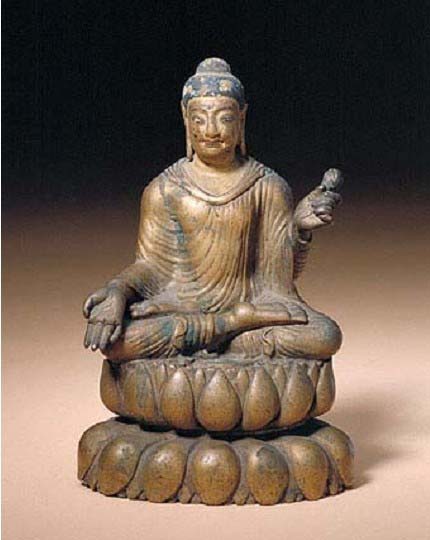
Sitting Statue of Sakyamuni preserved in the palace of Qing Dynasty
6-7 Century A.D Swat/Pakistan Brass 12.3cm(H)
The statue of Sakyamuni Buddha is sitting in the lotus position* (跏趺 [jiā fū]; pallankam abhujati). The face is gilded and the hairbun is colored in blue. The right hand poses the Mandra of Granting Wishes while the left hand is grasping the lappet.
The statue is stronglybuilt in a round-collar Buddhist robe covering both shoulders. One corner of the robe is draped behind the left shoulder. The texture is thickwith lively wrinkles.
All hints indicate that this is a late Ghandara-style Buddhist artpiece.
The oval lotus seat is placed upside down with large pedals and thinned waistline. The color of the statue head was painted in Tibet, as gilding or color-painting is believed to gain merits in ancient Tibetan custom.
The statue is affiliated with a yellow strip which reads in both Manchu and Mandarin: Sakyamuni Buddha, gift from the Dalai Lama on the 25th day of the 9th month in the 53rd year. The statue is verified as a gift from the then Dalai Lama to Emperor Qian Long in 1788 (the 53rd year of Qian Long's reign).
*Lotus sitting is a typical posture adopted by Buddhist mediators as sitting with legs crossed enables the mediators to concentrate their minds.
